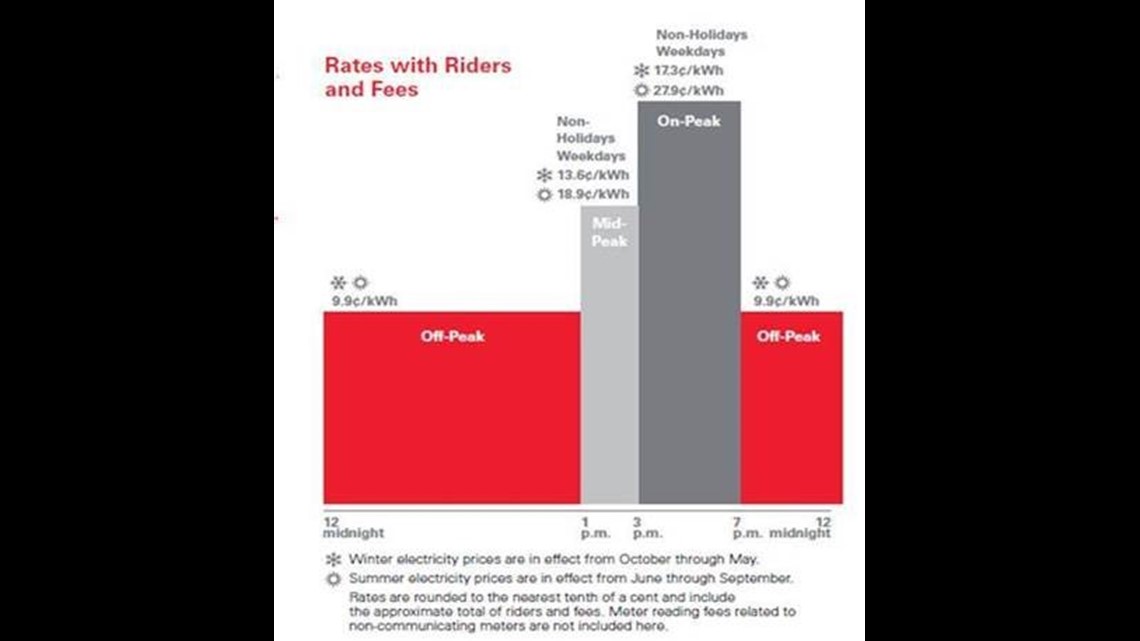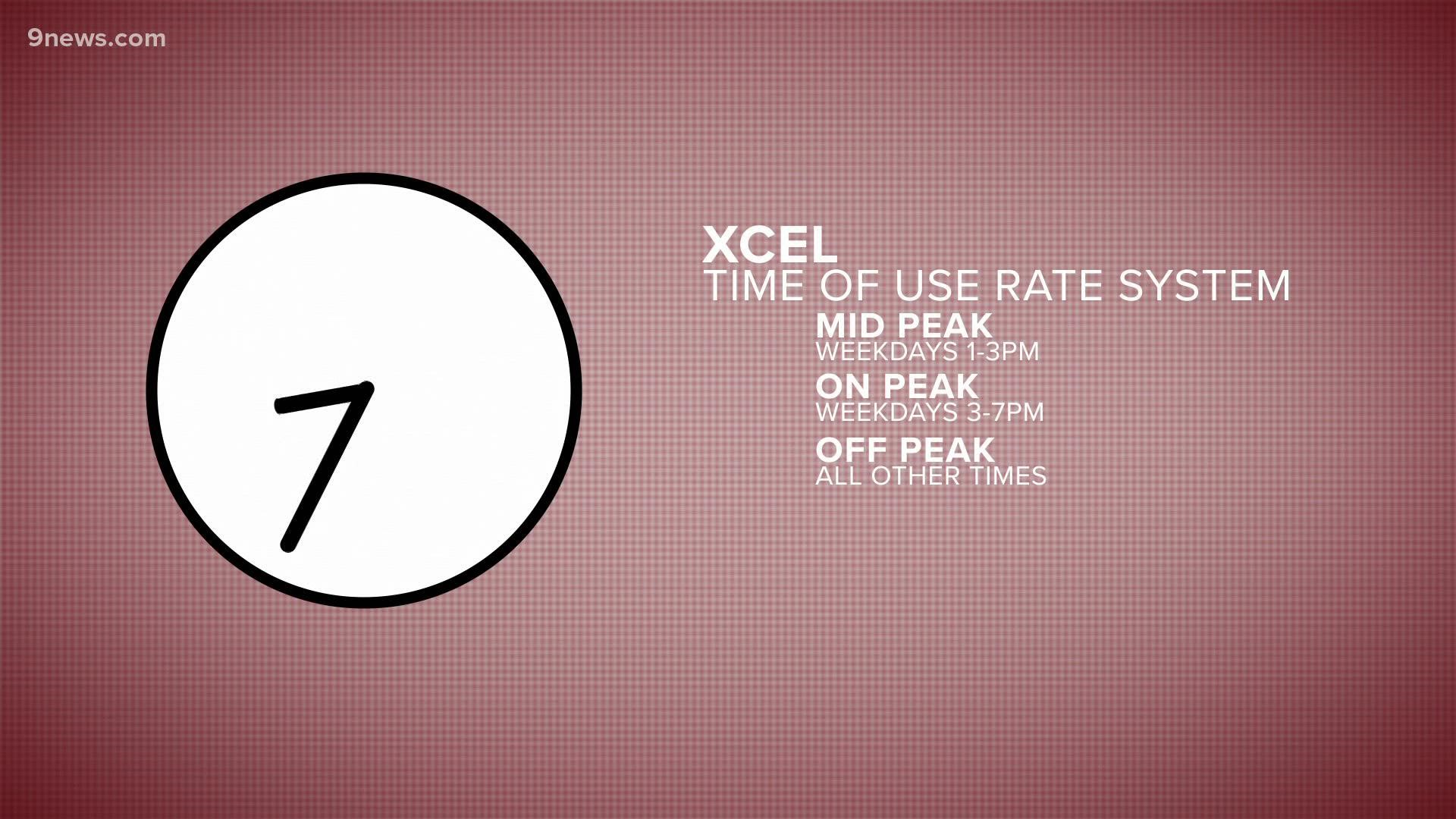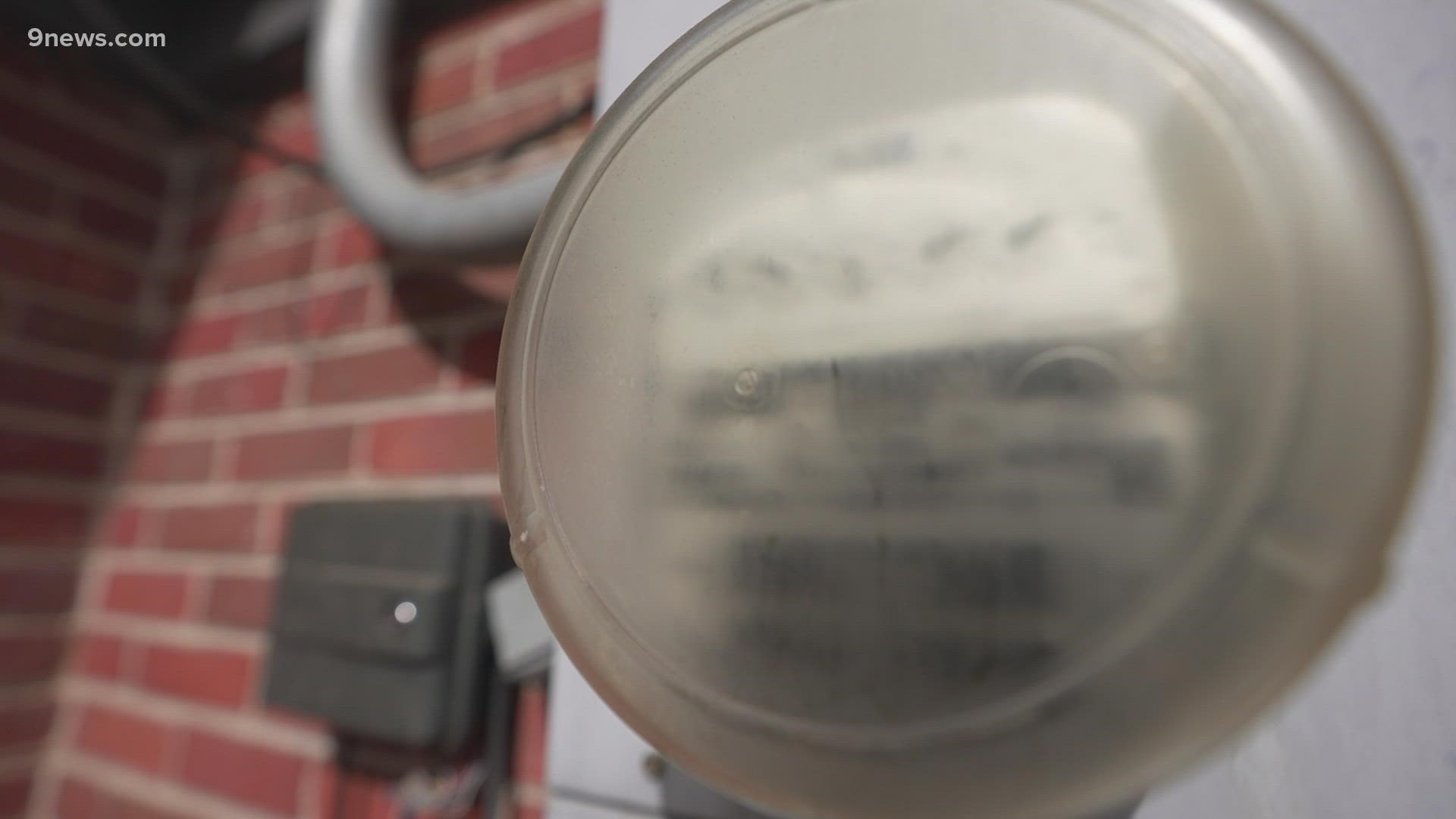DENVER — Xcel Energy is rolling out a new program this spring that will charge Colorado residential customers different rates depending on the time of day they use energy.
The company is transitioning to “Time of Use” rates, which adjusts rates throughout the day between three different sections of time. Customers using major electric appliances during “On-Peak” hours, from mid-afternoon to evening, will be charged the most expensive rates.
This only applies to electricity rates, not natural gas. The program only applies to Xcel’s residential customers, not commercial customers.
“We all get home, we all start using electricity, and our peak hour is around 6 at night,” said Hollie Velasquez Horvath, Xcel’s Regional Vice President of State Affairs and Community Relations.
“As customers start to switch to electric vehicles and plug their cars in, if they switch to electric heat pumps, if they’re going to switch from a gas to electric stoves – that really adds more onto our system.”
She said Xcel is considering how energy use and infrastructure will change into the future.
“As we’re building out, we’re hoping our customers will help us flatten out that use and start to maybe use their electricity differently. So we’re not building more generation to meet that peak, but maybe were just flatting out use, and that then saves us in adding more generation to the system over time.”
Xcel plans to transition all customers to the new rate plan by 2025, with the first group of 310,000 customers starting in March. Customers will be notified of the change, and will first receive a new electric meter from the Xcel – either a smart meter or a non-communicating meter.
Xcel outlined the "Time of Use" rates and hours on its website:
- On-Peak Hours: Weekdays between 3 p.m. and 7 p.m., excluding holidays.
- Mid-Peak Hours: Weekdays between 1 p.m. and 3 p.m., excluding holidays.
- Off-Peak Hours: Daily before 1 p.m. and after 7 p.m. plus weekends and holidays.


Rates are calculated by ckWh, or “cents per kilowatt hour.” Depending on the season, rates during On-Peak hours cost about 1.5 to 3 times more than Off-Peak rates. Rates are highest during the summer.
Xcel suggests customers, when possible, run their dishwasher overnight and laundry on the weekend. Velasquez Horvath says the biggest difference maker for customers under this plan will be their air conditioning use in the summer.
“Our AC in summer time is the biggest use of our electricity,” she explained. “So if we can encourage customers to cool their homes up until about 1pm and then maybe [adjust] their degrees… a bit, save a little bit on that A/C use, through about 7-8pm at night, then maybe put the A/C back on – that’s the biggest saver for customers.”
Xcel says it ran a “Time of Use” pilot program in Colorado prior to transitioning all customers to the plan. During that pilot, Xcel says most customers say their electricity bills remained the same, or even decreased slightly.
Xcel will also offer an “Opt Out” program for customers who prefer to stay on a seasonal, flat-rate pricing plan. But they encourage customers to consider trying the new system.
“I’d say give it a shot,” said Velasquez Horvath. “Try it a few months. When you get on ‘Time of Use,’ see how you’re using your energy. Try it for a couple of months. If it doesn’t work, that’s ok, too. It’s really about empowering customers to have choice.”
WHAT IF YOU WORK FROM HOME?
Time of Use rates apply only to residential addresses with the hope that this changes behavior at home. There's a gray area, however, with more people working from home because of COVID, in addition to people who run businesses out of there homes.
According to Xcel, a customer running a business out of their home could consider transferring to a commercial rate, but their business would have to account for at least 50% of their power usage. These customers would also need to get a special meter for their business.
Customers could choose to use the opt-out option here, as well, meaning a flat-rate charge for energy throughout the day, but Xcel said this means customers won't have the opportunity to save money by shifting energy usage to off-peak hours.
SUGGESTED VIDEOS: Latest from 9NEWS


